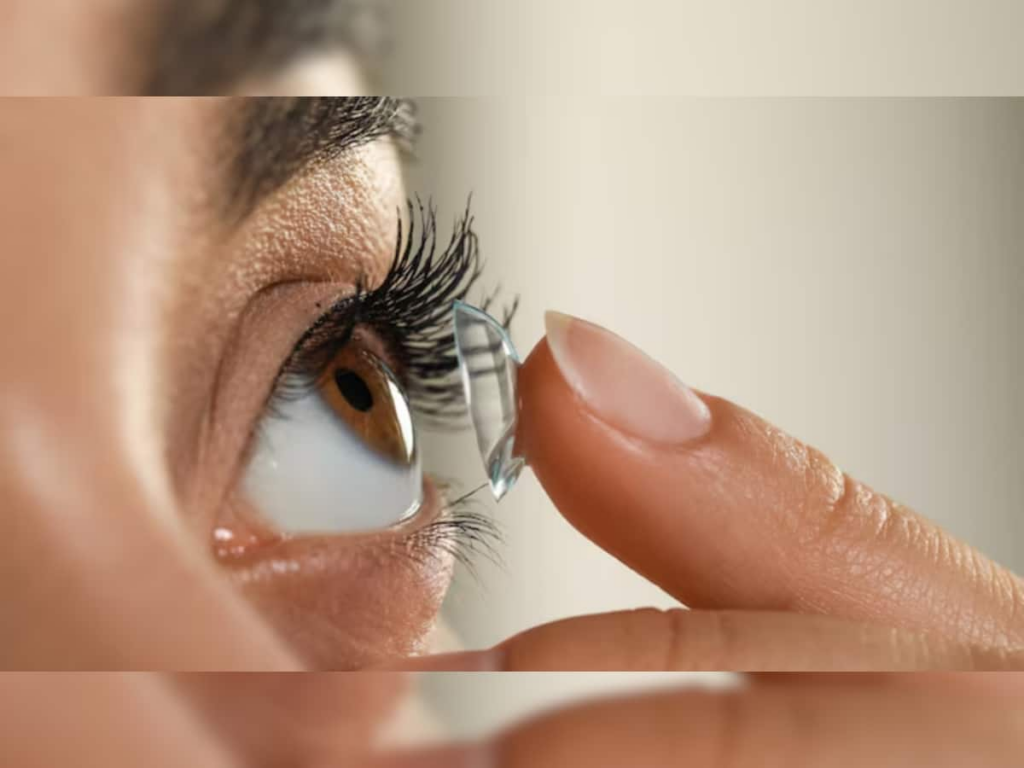For many, contact lenses are everyday vision helpers that they slip on, and the world stays sharp without fogging or slipping. Countless people put them in their contact lenses first thing in the morning and hardly think twice. Yet when lenses linger too long or cleaning is skipped, trouble can simmer.
According to Dr Priyanka Singh (MBBS, MS, DNB, FAICO), Consultant & Eye Surgeon, Neytra Eye Centre, New Delhi, using contact lenses excessively can lead to ‘Contact Lens Overwear Syndrome’ and can cause the following problems:
1. Dry eyes
Dr Singh says, “Dry eyes are a common plot twist. When lenses stay on for hours, the cornea feels starved for oxygen, and the tear film can flutter, leaving the eye itchy, red, or scratchy. A little tickle here and there might not bother most people, but the same tickle that won’t go away signals that the eyes are waving a warning flag.”
Using drops recommended by an eye care professional, reducing daily wear hours, and polishing the cleaning routine give the eyes a chance to recover.
2. Corneal abrasions and infection
Sometimes, lenses are worn longer than they should be, and the cornea ends up with tiny, painful scratches or corneal abrasions. A lens that does not fit properly, fingers that skip the rinse, or extended wear can all create these abrasions. When they appear, an infection may slip in, causing:
► Light sensitivity
► Foggy vision
► Excessive tearing
Ignoring these early signs can invite more serious problems. Prompt attention to even mild irritation is important.
3. Acanthamoeba keratitis
“Contact lens wearers are at high risk of developing ‘Acanthamoeba keratitis,’ a rare eye infection caused by bacteria in the cornea. The warning signs include eye pain, redness, blurred vision, sensitivity to light, and excessive tearing and discharge. If not diagnosed and treated this can cause significant corneal damage and potentially lead to vision loss,” reveals Dr Singh.
4. Corneal ulcers
A more serious consequence of contact lens overuse is the painful arrival of corneal ulcers, open sores that develop on the transparent layer of the eye. These wounds, usually sparked by bacterial, viral, or fungal invaders, can tear into the cornea’s protective surface.
The warning signs include intense pain, redness, blurred vision, searing that overshadows discomfort, cloudy vision, and pus-like drainage. Once a corneal ulcer takes hold, waiting is not an option; only prompt treatment can stop the infection and the threat of a lifetime of cloudy, twisted vision.
Preventive Measures
Follow these preventive steps for safe contact lens wear:
• Adhere to the suggested wear schedule and don’t use overnight, unless lenses are intended for extended wear.
• Adopt rigorous hygiene, such as proper cleaning, storage, and routine replacement of lenses and cases.
• Avoid swimming or showering while wearing lenses, as it might cause infection.
• Regular check-ups with an eye care professional are very important to keep the eyes in good health.
Detection of early onset of discomfort, redness, or vision changes is important. If any unusual symptoms appear, it is best to consult an eye specialist right away. Getting timely help can prevent minor irritation from turning into a more serious problem.
Contact lenses offer great convenience and freedom, but using them safely requires care and attention. Sticking to good hygiene, limiting how long lenses are worn, and seeking advice from a professional when needed can help people enjoy the benefits of contact lenses while keeping their eyes healthy and vision clear.

